While I was down in Maryland for Lord Baltimore’s Challenge, I had the pleasure of going to a small get together with the other instructors and the organizers. David Biggs, the event’s primary organizer, took out some of his antique rapiers and daggers for us to look at and play with — which is cool in it’s own right but it did allow for a cool a-ha! moment.
And that’s a beautiful representation of why you really want to find the opponent’s blade in a duel.
Notice anything?
Maybe like the sword point… or lack thereof?
Because of the taper of the blade to the tip and the fact that there’s no rubber blunt at the end, the blade pretty much vanishes before your very eyes. This isn’t a cool camera trick; this is what it looked like in person. Image trying to fence someone and you have no idea where the tip of their sword is? Your very life is on the line and you can’t see where your adversary’s point is.
Absolutely terrifying, right?
This a big, and underplayed reason why you really want to find the blade in a duel.
The reason we primarily talk about is so you can stringere, or constrain, the opponent’s weapon, allowing you to enter into measure more safely and to force them into a predictable action. And while this is 100% true and accurate, an underlying reason why you want to find their blade is because it’s visually very difficult to see where their sword is if they’re holding it correctly.
Having the sword parallel to the ground, like in the Fabris stance that Donovan is demoing, really makes the sword just vanish; all you see is a sliver of steel, the hilt, and hand/glove of the wielder. But even from a more upright Capoferro/Alfieri-esque stance, it’s still difficult to see the swordpoint. Look at the comparison image below.
Tip vs. No Tip (and Sharp)


It’s just not a thing we run into in HEMA and SCA Rapier because we, with some exceptions, use rubber tips and blunts at the end of the sword. Some of them are bright red, which is basically putting a giant WITNESS ME! sign at the end of your sword.
But even when the blunt is black, it still makes seeing the tip easier — as the image to the left demonstrates.
Edge geometry of a sharp blade vs. sparring blade also plays into why the blade just vanishes into thin air.
Sport vs. Martial Art
My approach to HEMA and SCA Rapier has been primarily to recreate the fencing instruction of the era and to understand the whys as much as the whats. A more historical martial arts, approach.
At the same time, HEMA and SCA Rapier is a sport and not self-defense; things that normally would be incredibly unsound and reckless are more reasonable when one’s life isn’t on the line. And while I think there’s a balance between the two, rooting one’s fencing in historical technique makes for a better foundation to fence on. If it’s good enough for life or death, it’s good enough for sport.
Working with sharps is one way to get a better understanding for the why we do certain things — in this case, finding the blade.
While at the party, Guy Windsor told a story about a student who would move the body way too early when performing the scanatura, and would keep running himself on his opponent’s sword. So Guy took out his sharp and said, “OK, now let’s do the play.”
They worked slowly, and just the presence of the sharp point meant the student felt vigorously compelled to complete the blade action first before passing forward with the body.
Once you have point-fear reintroduced, a lot of things that we know that are good fencing techniques but often fudge for the sake of the sport start to make a lot more sense again.
You want to find your opponent’s blade because it’s hard to see where it actually is in space.
You want to have the sword extended because your blade and hilt are your best sources of defense and you’re in a life or death situation.
You want to keep your body back because that’s where your vital organs are located and your opponent is trying to skewer it.
These revelations (or affirmations?) are one of the reasons I’d like to get a sharp for the Academie. It really helps put things into perspective. Perhaps one day. But for now, being able to get these cool little glimpses via friend’s antiques is pretty cool.
DONATIONS: If you found this post useful, please consider a small donation to my school, so I can continue to produce rapier & other historical martial arts content. Donate at https://www.paypal.com/paypalme/BostonAcademiedArmes.



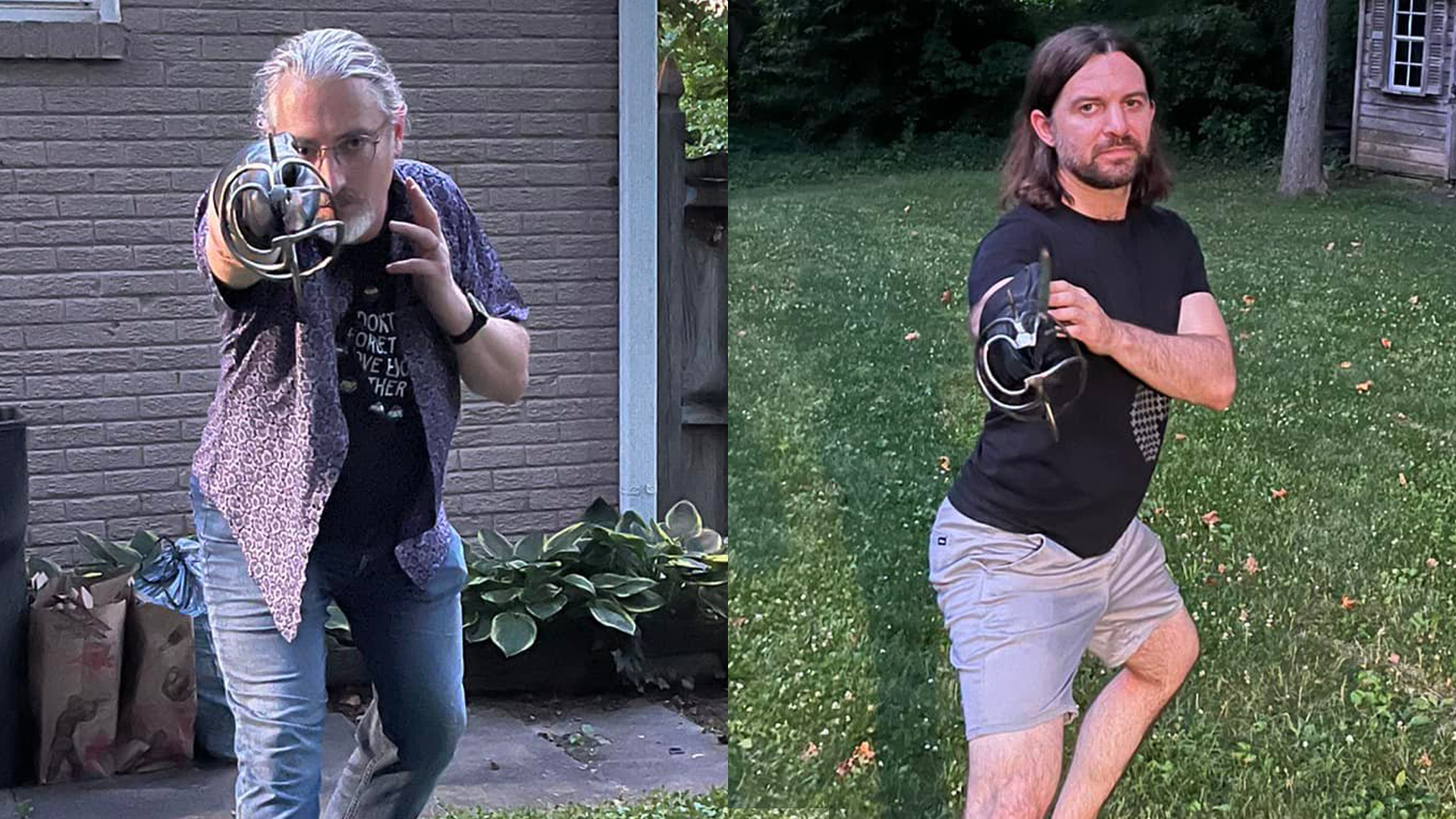



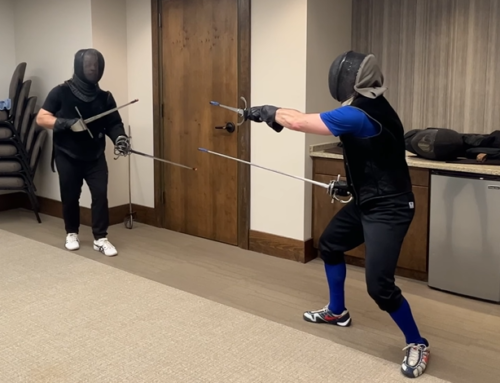
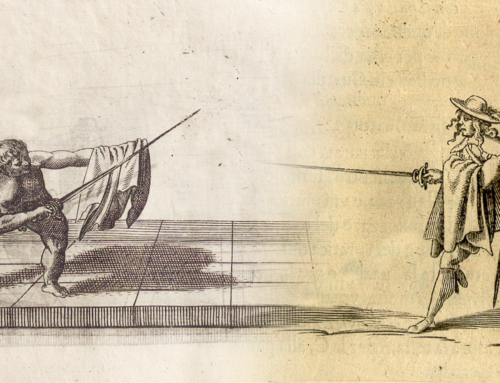

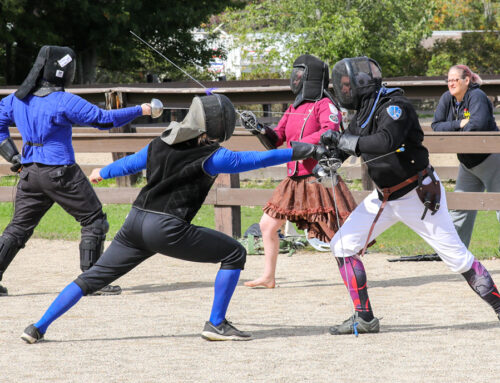
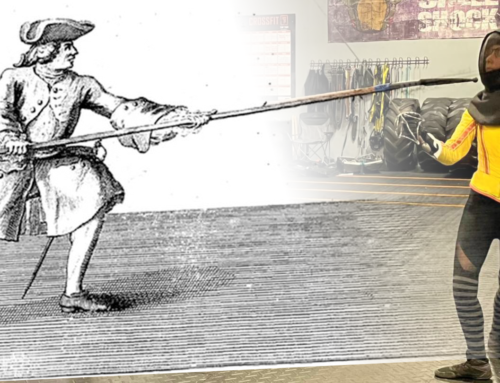
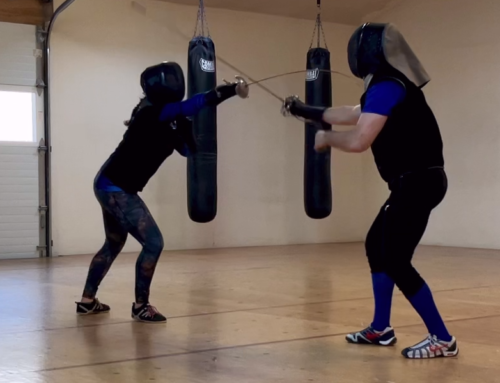
Leave A Comment